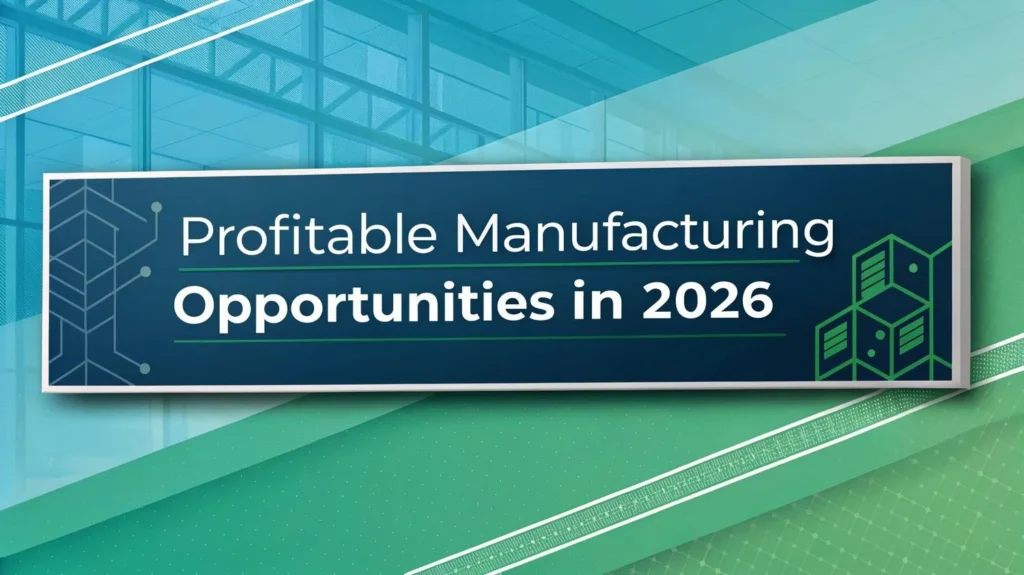As the world continues to combat climate change and reduce dependency on fossil fuels, the solar energy sector is witnessing an unprecedented boom. Among its various sub-segments, Solar PV Module Manufacturing stands out as a lucrative and sustainable business opportunity. India, with its abundant sunlight, favorable government policies, and growing energy needs, has become a global hotspot for solar energy investment. For aspiring entrepreneurs and businesses, setting up a Solar PV module manufacturing unit offers the potential for both profitability and environmental impact.
See Also: Surface Coating Manufacturing
Understanding the Solar PV Module Manufacturing Process
Before diving into the setup of a Solar PV module manufacturing unit, it’s essential to understand the basic manufacturing process. A solar photovoltaic (PV) module is made up of solar cells that convert sunlight into electricity. These cells are usually made from silicon wafers and are encapsulated with materials to protect them from external elements. The process includes:
-
Wafer Sourcing and Processing: Silicon wafers are the base material. These are cleaned, doped, and textured to increase light absorption.
-
Cell Manufacturing: The processed wafers are turned into photovoltaic cells using various treatments and coatings.
-
Module Assembly: PV cells are interconnected with conductive ribbons and laminated between glass and a protective backsheet.
-
Testing and Quality Control: Modules undergo performance testing under standard conditions to ensure durability, efficiency, and reliability.
-
Packaging and Distribution: Finished modules are packed and shipped to customers or project sites.
Each of these stages requires specialized machinery, skilled manpower, and adherence to international quality standards, making it essential for new entrants to plan meticulously.
Market Demand and Growth Drivers
The demand for Solar PV module manufacturing is driven by the exponential rise in solar installations worldwide. India’s ambitious targets, such as achieving 280 GW of solar power capacity by 2030, are acting as catalysts for the growth of domestic module production. The country also aims to reduce its dependency on imported solar modules, particularly from China, by offering Production Linked Incentive (PLI) schemes and other subsidies to local manufacturers.
Moreover, global awareness about clean energy, rising electricity costs, and rapid industrialization are compelling residential, commercial, and utility-scale sectors to adopt solar energy solutions. These trends translate into steady demand for PV modules, creating immense scope for new manufacturing units.
Key Components and Equipment Required
To set up a functional Solar PV module manufacturing unit, the following key components and machinery are required:
-
Tabber Stringer Machines: Used to solder solar cells together.
-
Laminators: For encapsulating the cells with glass and protective films.
-
Cell Tester and Sorting Machines: To ensure performance standards.
-
Module Assembly Tables: For manual and automated module construction.
-
Flash Testers and EL Testers: To check power output and detect microcracks.
-
Framing and Junction Box Installation Tools: For final assembly and electrical connectivity.
An initial investment in high-quality machinery ensures efficiency, reliability, and scalability. Depending on the production capacity, land and infrastructure needs will vary. For small to medium-scale plants, a built-up area of 15,000 to 25,000 square feet may suffice.
Financial Considerations and Capital Requirements
The cost of setting up a Solar PV module manufacturing unit depends on the scale and level of automation. A small-scale plant with a capacity of 25 MW may require an investment of ?10 to ?15 crores, including machinery, plant setup, workforce, working capital, and marketing. Medium and large-scale setups (100 MW and above) can require ?50 crores or more.
Key cost components include:
-
Plant and machinery: 50-60% of the total cost
-
Land and infrastructure: 10-15%
-
Working capital: 15-20%
-
Utilities and licensing: 5%
-
Miscellaneous and unforeseen: 5-10%
To finance the unit, entrepreneurs can explore various funding options like term loans from banks, venture capital, government grants, and PLI schemes. Government-backed institutions such as IREDA (Indian Renewable Energy Development Agency) also offer tailored financial assistance for renewable energy projects.
Licensing, Approvals, and Certifications
Compliance is crucial for a Solar PV module manufacturing unit. Some key approvals and certifications required include:
-
Company Registration under MSME or other structures
-
GST Registration
-
Factory License
-
Consent to Establish and Operate from Pollution Control Board
-
CE Certification and IEC Testing for product export
-
BIS (Bureau of Indian Standards) Certification for modules (mandatory in India)
In addition, manufacturers targeting export markets must adhere to the destination country’s quality and safety regulations.
Skilled Workforce and Training
The operation of a Solar PV module manufacturing unit demands a mix of skilled, semi-skilled, and unskilled workers. Positions include:
-
Electrical and Electronics Engineers
-
Mechanical Engineers
-
Quality Control Experts
-
Machine Operators
-
Technicians and Helpers
Training is critical, especially for machine handling, quality assurance, and safety compliance. Collaborations with local technical institutes or government-run skilling programs can help build a capable workforce.
Environmental Benefits and Sustainability
One of the most compelling reasons to invest in Solar PV module manufacturing is its alignment with environmental sustainability goals. Solar modules play a pivotal role in reducing greenhouse gas emissions, mitigating climate change, and promoting energy independence. Compared to conventional energy sources, solar energy has:
-
Zero carbon emissions during operation
-
Low water usage
-
Minimal environmental degradation
-
A long lifecycle (typically 25+ years)
Manufacturers can further enhance sustainability by adopting waste reduction techniques, using recycled materials, and implementing energy-efficient production practices.
Profitability and Business Model
The profitability of a Solar PV module manufacturing unit depends on factors such as production capacity, cost-efficiency, quality, branding, and market access. Here are common business models:
-
B2B Sales: Selling modules to EPC contractors, solar developers, and installers.
-
OEM Partnerships: Manufacturing modules for other brands under contract.
-
Direct to Consumer (D2C): Selling branded modules directly via dealers or online channels.
-
Export: Targeting overseas markets with high solar adoption and incentives.
With good planning and strategic execution, net profit margins can range from 10% to 25% based on volume and operational efficiency.
Government Support and Incentives
The Indian government is aggressively promoting domestic manufacturing through schemes like:
-
PLI Scheme for High-Efficiency Solar PV Modules: Offers incentives to manufacturers based on performance and domestic value addition.
-
Modified Special Incentive Package Scheme (M-SIPS): For electronic manufacturing units.
-
Custom Duty Benefits: Safeguard duties on imported modules to protect domestic industries.
-
State-Level Subsidies: Land at concessional rates, electricity subsidies, and single-window clearances in states like Gujarat, Tamil Nadu, and Rajasthan.
These measures significantly reduce entry barriers and encourage entrepreneurship in the sector.
Challenges and Risk Mitigation
Despite its attractiveness, the Solar PV module manufacturing industry is not without challenges. Key concerns include:
-
Price volatility of raw materials like polysilicon
-
Intense competition from established global brands
-
Technological obsolescence
-
Regulatory changes and trade policies
-
Logistics and supply chain management
To mitigate these risks, manufacturers should diversify their supply chain, invest in R&D, ensure product innovation, and build a strong distribution network.
Future Outlook and Expansion Potential
The future of Solar PV module manufacturing looks highly promising. Emerging trends such as bifacial modules, PERC and TOPCon technologies, and integrated storage solutions are transforming the solar landscape. Manufacturers that stay ahead of these trends will enjoy a competitive edge.
Moreover, integrating backward (cell and wafer manufacturing) and forward (solar system integration) can create additional revenue streams and reduce dependence on external vendors. The rise of rooftop solar installations, smart grids, and electric vehicles further expands the scope of solar manufacturing businesses.
See Also: Small Business Idea
Conclusion
Starting a Solar PV module manufacturing unit is both a profitable and purpose-driven venture. It not only capitalizes on the growing demand for clean energy but also contributes to national goals like Atmanirbhar Bharat and global climate commitments. With strategic planning, technical know-how, and strong execution, entrepreneurs can build a resilient, future-ready business in one of the most dynamic sectors of the green economy.




